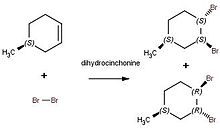4-Methylcyclohexene

| |
| Names | |
|---|---|
| IUPAC name
4-Methylcyclohexene
| |
| Systematic IUPAC name
4-Methylcyclohexene | |
| Other names
2,3,4,5-Tetrahydrotoluene
| |
| Identifiers | |
3D model (JSmol)
|
|
| 1901299 | |
| ChemSpider | |
| ECHA InfoCard | 100.008.834 |
| EC Number |
|
PubChem CID
|
|
| UNII | |
| UN number | 3295 |
CompTox Dashboard (EPA)
|
|
| |
| |
| Properties | |
| C7H12 | |
| Molar mass | 96.173 g·mol−1 |
| Appearance | Colorless liquid |
| Density | 0.799 g/mL |
| Melting point | −115.5 °C (−175.9 °F; 157.7 K) |
| Boiling point | 103 °C (217 °F; 376 K) |
| low | |
| Hazards | |
| GHS labelling: | |
  
| |
| Warning | |
| H225, H304, H315, H319, H335 | |
| P210, P233, P240, P241, P242, P243, P261, P264, P271, P280, P301+P310, P302+P352, P303+P361+P353, P304+P340, P305+P351+P338, P312, P321, P331, P332+P313, P337+P313, P362, P370+P378, P403+P233, P403+P235, P405, P501 | |
| Flash point | −3 °C (27 °F; 270 K) |
| Safety data sheet (SDS) | MSDS (1-methylcyclohexene) |
Except where otherwise noted, data are given for materials in their standard state (at 25 °C [77 °F], 100 kPa).
| |
4-Methylcyclohexene is an organic compound consisting of cyclohexene with a methyl group substituent attached to carbon most distant from the alkene group. Two other structural isomers are known: 1-methylcyclohexene and 3-methylcyclohexene. All are colorless volatile liquids classified as a cyclic olefins. They are specialized reagents.
Methylcyclohexenes are formed by the partial hydrogenation of toluene to methylcyclohexane over ruthenium catalyst.[1]
In the presence of a Cinchona alkaloid, bromination of an alkene can leads to optically active dibromides.[2] For 4-methylcyclohexene, the (S)-configuration leads to two different products: the bromines can add at the axial positions, giving the orientation (1S,3R,4R), or at the equatorial positions, giving the orientation (1S,3S,4S). Similarly, the (R)-configuration produces two different products: axial addition yields the configuration (1R,3S,4S) and equatorial addition yields (1R,3R,4R).
References
[edit]- ^ Belohlav, H.; Kluson, P.; Cerveny, L. (1997). "Partial Hydrogenation of Toluene Over A Ruthenium Catalyst, A Model Treatment of A Deactivation Process". Res. Chem. Intermed. 32 (2): 161–168. doi:10.1163/156856797X00312. S2CID 95532469.
- ^ Bellucci, G.; Giordano, C.; Marsili, A.; Berti, G. (1969). "Asymmetric Bromination of 4-Methylcyclohexene in the Presence of Dihydrocinchonine". Tetrahedron. 25 (18): 4515–4522. doi:10.1016/S0040-4020(01)82993-8.

